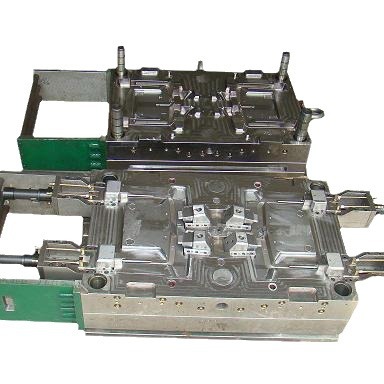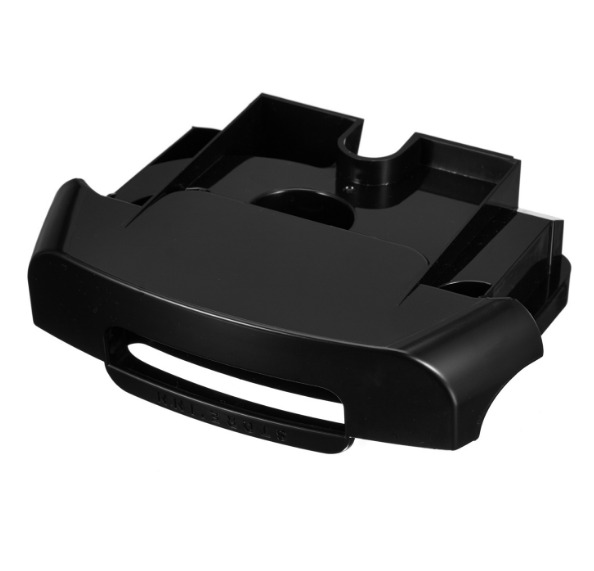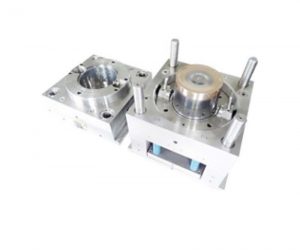Molding is a manufacturing process that uses a rigid frame called a mold or matrix to shape liquid or plastic materials into the desired shape. It's widely used to make parts from various materials like metal, plastic, rubber, glass, and ceramics. In this article, we'll explore different types of molding processes, their pros and cons, and some common examples. from Mold7.
There are many types of molding processes, including injection molding, compression molding, die-casting molding, and blow molding. Each process has its own unique features and applications.
Injection molding is a popular method where molten plastic is injected into a mold and then cooled to solidify. This process is efficient, cost-effective, and allows for great design flexibility. However, it can require a lot of post-processing steps and may produce bubbles and defects.
Compression molding involves placing a malleable material into a mold and applying pressure to shape it. This method is good for making complex-shaped parts with high precision and surface quality. The downside is that it requires more pressure and takes longer to mold.
Die casting is when molten metal is poured into a mold and cooled to create parts. It's fast and efficient, making it ideal for mass production. But, it comes with high mold costs and can easily lead to pores and shrinkage issues.
Blow molding heats plastic materials until they soften, then blows them into shape. This method is great for large containers and pipes because it's cheaper and more flexible in design. However, it needs larger equipment and takes longer to complete.
Injection Molding
Injection molding is a popular method used to shape things. It works by shooting hot, melted stuff into a mold under strong pressure. This melted material then cools down and hardens into the exact shape of the mold. This process can make really detailed and precise parts, and it's great for making lots of identical items quickly.
Here are some good things about injection molding:
- You can make complex shapes easily.
- The results have high accuracy and smooth finishes.
- There's not much waste.
- You can use lots of different materials and colors.
But there are also some challenges:
- Making the mold costs a lot upfront.
- It's mainly for making thin parts.
- Sometimes you get problems like warping or shrinking.
- Once the mold is made, changing the design is tough.
Things that are often made with injection molding include:
- Plastic bottles and containers
- Toys and games
- Parts for cars
- Medical equipment
- Electronic cases and connectors
Blow Molding
Blow molding is a popular method for creating hollow items from thermoplastic materials. It starts with melting the material and forming it into a tube-like shape called a parison. This parison is then placed between two halves of a mold. Next, air is blown into the parison, causing it to expand and fit the shape of the mold. After cooling down, the material hardens, resulting in the final product.
This process allows for making parts with consistent wall thickness and intricate designs.
Here are some benefits of blow molding:
It's affordable and quick to produce large, hollow items. The products made this way are strong and last long. They also resist chemicals and environmental factors well.
However, there are some drawbacks too:
It's mainly used for thin-walled items. There's a risk of defects like small holes or bubbles. Controlling the wall thickness can be tricky. And, not all materials or colors can be used.
Common items made through blow molding include plastic bottles, fuel tanks, sports equipment, and home furnishings.
Compression Molding
Compression molding is a process that makes solid parts from materials like rubber, silicone, epoxy, and phenolic. First, you preheat the material and put it in a mold. Then, you add pressure and heat to shape it. The material changes chemically to become hard and strong.
This method has some great benefits:
- It's cheap and easy to do.
- You can make big and thick parts.
- The parts are very strong and last long.
- They also resist heat and corrosion well.
However, there are some downsides too:
- It takes a long time to make each part.
- You can only make simple shapes.
- There's a lot of waste.
- It's hard to get the exact size and smoothness you want.
Some things made with compression molding include:
- Rubber seals and gaskets
- Silicone implants and prosthetics
- Electrical insulators and connectors
- Brake pads and linings

Rotational Molding
Rotational molding, also known as roto-molding or rotational casting, is a special way to make hollow, seamless, and three-dimensional plastic parts. Unlike other molding methods, this process involves rotating a mold on multiple axes while heating and cooling it to get the desired shape and thickness of the final product.
One big plus of rotational molding is that it can produce large and complex parts with uniform wall thickness. The plastic material spreads evenly inside the mold during rotation, so there's no need for extra tools or steps to ensure uniformity. This results in strong and visually appealing products with consistent wall thickness, which is great for things that need durability.
Another key benefit is its cost-effectiveness for low-volume and custom production runs. Other molding processes might require expensive and intricate tooling for each variation, but rotational molds are simpler and cheaper to produce. This makes rotational molding perfect for small-batch manufacturing, custom items, and prototypes where minimizing tooling costs is crucial.
The versatility of rotational molding is another attractive feature. It allows manufacturers to create parts of various sizes, shapes, and complexities, including products with contoured surfaces, undercuts, and intricate details. From large industrial tanks and containers to smaller recreational products like playground equipment and kayaks, rotational molding can meet diverse design needs, making it a preferred choice in various industries.
Moreover, rotational molding offers excellent design flexibility. It allows for easy integration of features like inserts, threads, and handles directly into the mold. This eliminates the need for secondary assembly processes and enhances the product's functionality and aesthetics. Additionally, rotational molding supports the use of various materials, including polyethylene, polypropylene, nylon, and PVC, enabling manufacturers to choose the best material for specific performance and application needs.
Furthermore, rotational molding is environmentally friendly. Since the molds are reusable, there is minimal waste generated during production. Any excess plastic material, known as "flashing," can be recycled and reused in subsequent molding cycles, reducing material waste and promoting sustainability.
Rotational molding finds applications across many industries due to its unique capabilities and advantages. In the automotive sector, it's used to make fuel tanks, bumpers, and air ducts. In the marine industry, it helps create buoyancy tanks, boat hulls, and watercraft components. In the medical field, it's used for orthopedic products, patient support systems, and medical equipment enclosures. Recreational products like playground equipment, kayaks, and outdoor furniture are also commonly produced using rotational molding because it achieves complex shapes and durable construction.
In conclusion, rotational molding is a highly versatile and cost-effective plastic molding process that offers many benefits for making hollow, seamless, and three-dimensional plastic parts. Its ability to create large and complex products with consistent wall thickness, design flexibility, and easy integration of features makes it suitable for a wide range of applications in various industries. Whether it's automotive, marine, medical, or recreational products, rotational molding continues to drive innovation and help manufacturers create high-quality, durable, and visually appealing products that meet market and end-user demands.
Vacuum forming:
Vacuum forming is a method where plastic sheets or thin films are shaped under vacuum conditions. During this process, the material gets heated to a flexible state and is then pulled onto a mold using a vacuum. Once it cools down, it becomes the finished product.
Here's how vacuum forming works:
- Material Preparation: Plastic sheets or thin films are used as the starting materials.
- Heating and Forming: The material is heated until it can be molded.
- Vacuum Absorption: A negative pressure is created in the mold, and the softened plastic is sucked into the shape of the mold.
- Cooling and Solidification: The plastic cools and hardens inside the mold.
- Part Removal: After cooling, the final product is taken out of the mold.
The benefits of vacuum forming include:
- It can create complex three-dimensional shapes.
- It's very efficient for production.
- It requires relatively simple equipment.
- It's great for making lots of items quickly.
This technique is widely used to make plastic cases, containers, car dashboards, and more. By carefully controlling the heating temperature and vacuum pressure, high-quality parts can be made. In short, vacuum forming is a straightforward and effective way to shape plastic.
Extrusion molding:
Extrusion molding is a way to make continuous shapes or pipes by pushing melted materials through special-shaped holes. This method can create many different plastic and rubber items, like pipes, wires, and complex-shaped profiles.
Here's how it works:
- Material Feeding: Plastic or rubber raw materials are put into the extruder.
- Melting and Plasticizing: These materials are heated and melted inside the extruder.
- Extrusion through Die: The melted material is pushed through a shaped die, forming the desired cross-sectional shape.
- Cooling and Shaping: The extruded material is cooled down, usually with water or air, to keep its shape.
- Cutting/Winding: Depending on what you need, the long product is either cut into pieces or wound onto a spool.
Key Features:
- Continuous Production: Extrusion allows making long, continuous parts.
- Complex Cross-Sections: The die design can make intricate or specialized shapes.
- Variety of Materials: It works with thermoplastics, thermosets, rubbers, and other materials that can be extruded.
- High Production Rates: Extrusion can produce a lot more quickly than other methods.
Common Uses:
- Pipes and tubes
- Wire and cable coatings
- Window frames and door profiles
- Automotive trim and moldings
- Packaging films and sheets
In short, extrusion molding is a flexible and efficient process for making a wide range of plastic and rubber products with consistent quality and dimensions.
Conclusion
Mold manufacturing is a manufacturing process that can produce components of various shapes, sizes, and materials. According to different mold manufacturing processes, we need to consider different advantages and disadvantages. Injection molding, blow molding, compression molding, and rotary molding are some of the most common mold manufacturing processes, each with its own applications and characteristics. By understanding the basic knowledge of these processes, you can choose the most suitable mold manufacturing process for your project and optimize your design to accommodate mold manufacturing.

